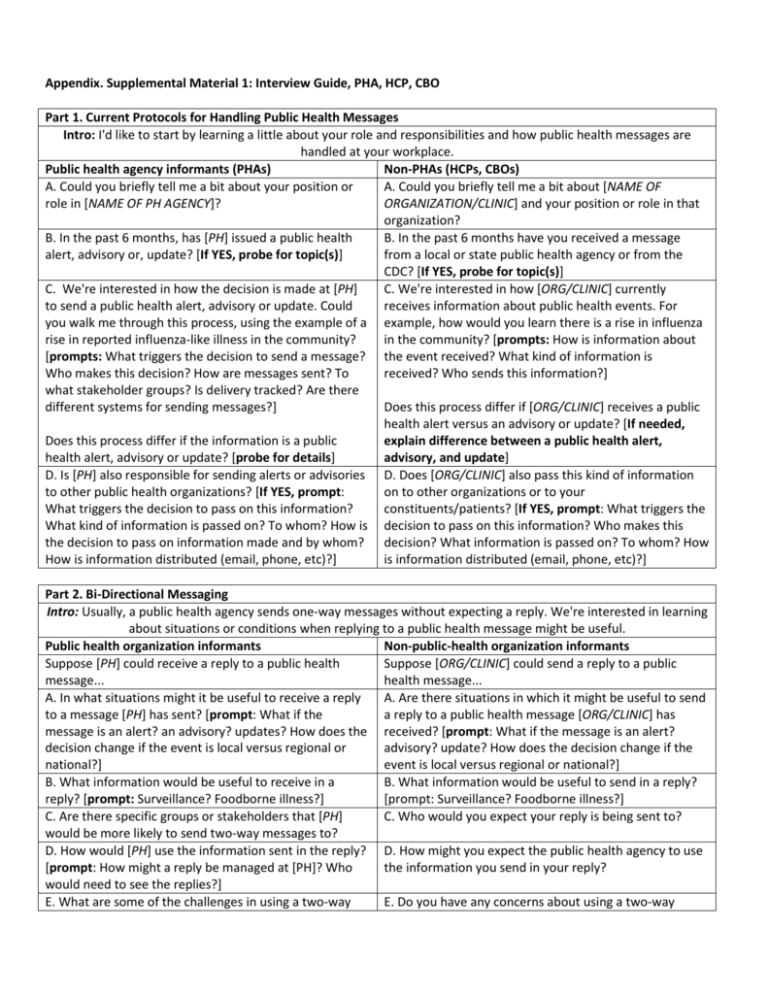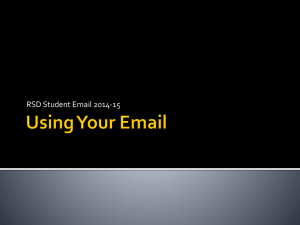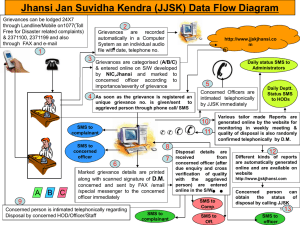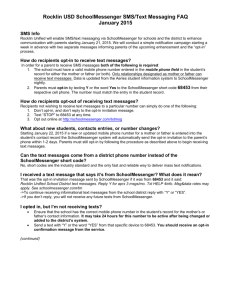file - BioMed Central
advertisement

Appendix. Supplemental Material 1: Interview Guide, PHA, HCP, CBO Part 1. Current Protocols for Handling Public Health Messages Intro: I'd like to start by learning a little about your role and responsibilities and how public health messages are handled at your workplace. Public health agency informants (PHAs) Non-PHAs (HCPs, CBOs) A. Could you briefly tell me a bit about your position or A. Could you briefly tell me a bit about [NAME OF role in [NAME OF PH AGENCY]? ORGANIZATION/CLINIC] and your position or role in that organization? B. In the past 6 months, has [PH] issued a public health B. In the past 6 months have you received a message alert, advisory or, update? [If YES, probe for topic(s)] from a local or state public health agency or from the CDC? [If YES, probe for topic(s)] C. We're interested in how the decision is made at [PH] C. We're interested in how [ORG/CLINIC] currently to send a public health alert, advisory or update. Could receives information about public health events. For you walk me through this process, using the example of a example, how would you learn there is a rise in influenza rise in reported influenza-like illness in the community? in the community? [prompts: How is information about [prompts: What triggers the decision to send a message? the event received? What kind of information is Who makes this decision? How are messages sent? To received? Who sends this information?] what stakeholder groups? Is delivery tracked? Are there different systems for sending messages?] Does this process differ if [ORG/CLINIC] receives a public health alert versus an advisory or update? [If needed, Does this process differ if the information is a public explain difference between a public health alert, health alert, advisory or update? [probe for details] advisory, and update] D. Is [PH] also responsible for sending alerts or advisories D. Does [ORG/CLINIC] also pass this kind of information to other public health organizations? [If YES, prompt: on to other organizations or to your What triggers the decision to pass on this information? constituents/patients? [If YES, prompt: What triggers the What kind of information is passed on? To whom? How is decision to pass on this information? Who makes this the decision to pass on information made and by whom? decision? What information is passed on? To whom? How How is information distributed (email, phone, etc)?] is information distributed (email, phone, etc)?] Part 2. Bi-Directional Messaging Intro: Usually, a public health agency sends one-way messages without expecting a reply. We're interested in learning about situations or conditions when replying to a public health message might be useful. Public health organization informants Non-public-health organization informants Suppose [PH] could receive a reply to a public health Suppose [ORG/CLINIC] could send a reply to a public message... health message... A. In what situations might it be useful to receive a reply A. Are there situations in which it might be useful to send to a message [PH] has sent? [prompt: What if the a reply to a public health message [ORG/CLINIC] has message is an alert? an advisory? updates? How does the received? [prompt: What if the message is an alert? decision change if the event is local versus regional or advisory? update? How does the decision change if the national?] event is local versus regional or national?] B. What information would be useful to receive in a B. What information would be useful to send in a reply? reply? [prompt: Surveillance? Foodborne illness?] [prompt: Surveillance? Foodborne illness?] C. Are there specific groups or stakeholders that [PH] C. Who would you expect your reply is being sent to? would be more likely to send two-way messages to? D. How would [PH] use the information sent in the reply? D. How might you expect the public health agency to use [prompt: How might a reply be managed at [PH]? Who the information you send in your reply? would need to see the replies?] E. What are some of the challenges in using a two-way E. Do you have any concerns about using a two-way INTERVIEW GUIDE (combined for all stakeholder types) messaging system? [prompts: undue burden, language limitations, irrelevant or inappropriate responses , etc.] F. During what public health events might it be better to send a one-way message rather than a two-way message? messaging system? [prompts: undue burden, language limitations, uncertain where reply is sent, etc.] F. During what public health events might it be better to receive a one-way message rather than a two-way message? Part 3. Text Messaging and Two-Way Texting Intro: We're interested in learning about your experience with text messaging.[If needed, provide definition of SMS] Public health organization informants Non-public-health organization informants A. Is texting used in your workplace? [If YES, probe: How A. Is texting used in your workplace? [If YES, probe: How is SMS used? Can you give me a recent situation in which is SMS used? Recent situation in which SMS was used? If SMS was used? If NO: Does [PH] restrict use of SMS?] NO Does [ORG/CLINIC] restrict use of SMS?] B. What specific stakeholder groups would you be more B. Would text messaging be a useful way for likely to communicate with using text and why? [prompt: [ORG/CLINIC] to communicate with other organizations CBOs? HCPs? General public? Other public health or your constituents/patients? agencies? Internally? Local or state government groups? Others?] C. During what public health events might it be better to D. During what public health events might it be better to not send SMS, but instead use email or the phone or get a public health message via email or phone or some some other medium? other medium other than text messages? D. Would two-way SMS be useful for ongoing routine D. Would two-way SMS be useful for ongoing routine communication with stakeholders or only for special communication with other organizations your circumstances? Or could it be both?[probe reasons and constituents/patients, and public health? Or would text circumstances] messages only be useful for special circumstances? [probe reasons and circumstances] Page 2 of 2





